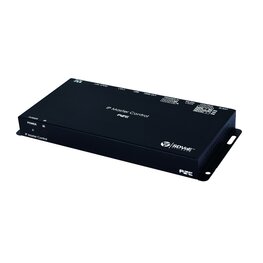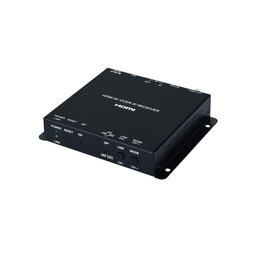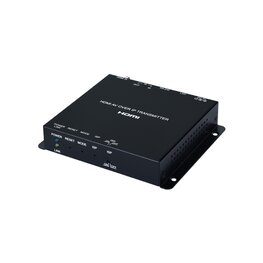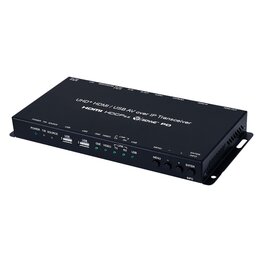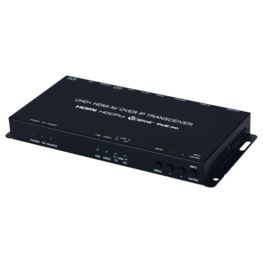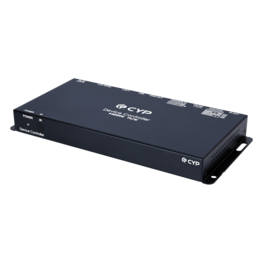Video over IP
"Video over IP" describes a new, Internet-based transmission method for video and audio content. Here, the media inputs are split into different streams and then transmitted as individual packets over an IP network. After the information is received at its destination, it is reassembled and aligned using synchronization technology. One of the main advantages of this technology is the ability to allow some flexibility.
Here, the SDVoE standard defines a transmission of various signals such as video, audio, USB, RS-232 over a common medium. The differences from other methods that multiplex signals and transmit them together is (1) all signals are packed into IP packets and transmitted over Ethernet and (2) the signals coexist with other network traffic.
SDVOE
The SDVoE standard defines a transmission of different signals such as video, audio, USB, RS-232 over a common medium. The differences to other methods, which multiplex signals and transmit them together, is
- All signals are packed into IP packets and transmitted over Ethernet
- The signals coexist with other network traffic
Sufficient bandwidth is assumed; with 10Gbit technology, the patented visually lossless method can also transmit images in UHD/4k resolution.
The transmitter bundles all input signals and converted them into the IP packet. The receiver converts the signals from IP and unbundles them back to the original format. The devices presented here combine Tx and Rx function and can be optionally combined. All other components of the network like cables and switches come from IT. With an optional IP Master Controller, inputs and outputs can be assigned to each other as desired, just like with a Matrix-Switch.
Basic configuration of an AV extender
Point-to-point connection
The simplest extender configuration is a point-to-point system with a single unit in transmitter mode connected directly to a single unit in receiver mode. In this configuration, the HDMI input on the transmitter is transmitted to the connected receiver without changing the audio or video format. The stereo analog audio port on the transmitter acts as an input and transmits audio directly to the stereo analog audio port on the receiver for output. The LAN, RS-232, and IR ports form direct connections between the transmitter and receiver.
Note: In this configuration, the IP Master Controller or control software is not used or required to function. No audio insertion/extraction is performed in this configuration.

Advanced AV Extender - Configuration and Control
Combined with the IP master controller or control software and a 10 Gigabit Ethernet switch, this expansion system gains additional configuration options such as multi-in/multi-out matrix switching with audio. Analog audio extraction and embedding is fully controllable. In addition, control over the configuration of stereo analog audio ports becomes possible, and audio/IR/RS-232 routing can be fully controlled.
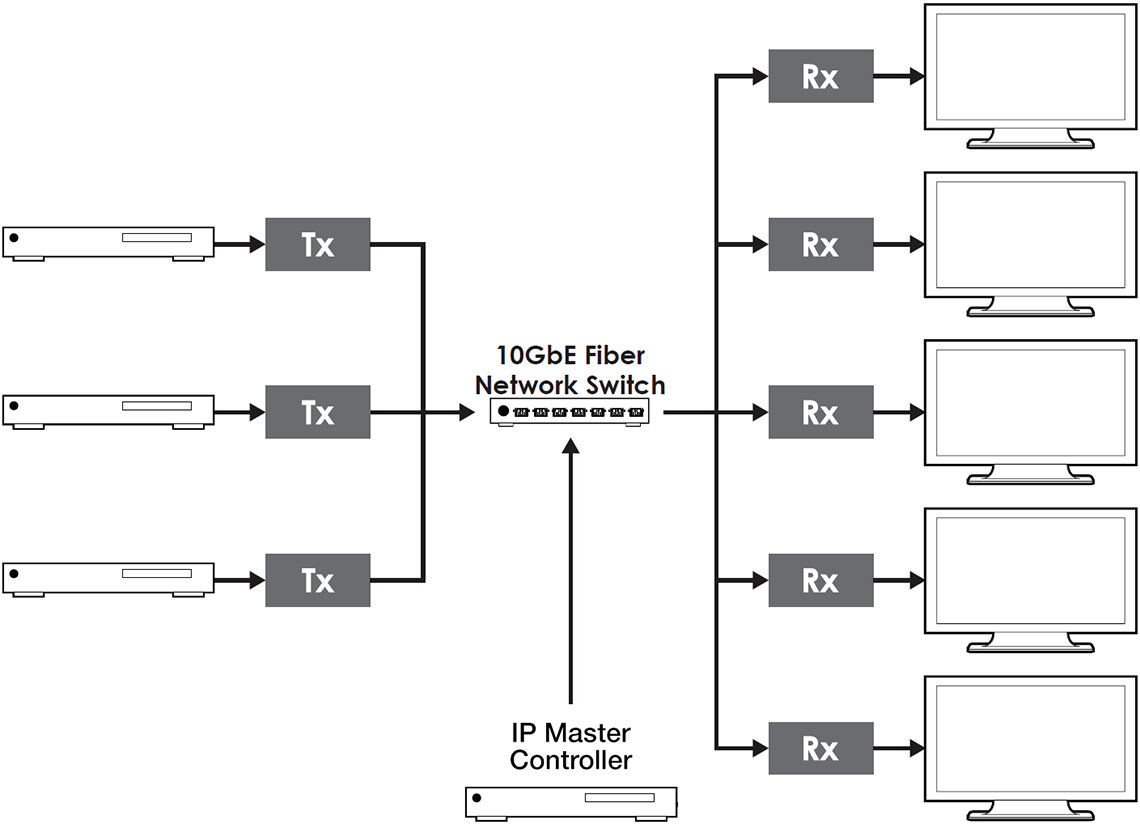
Configuration examples
In combination with the IP master controller and a 10 Gigabit Ethernet switch, this expansion system gets a large number of additional configuration options, including: Multi-in/multi-out matrix switching with audio, video wall creation, and a multi-view output mode. Audio extraction and embedding is fully controllable. In addition, control over the configuration of the stereo analog audio port on transceivers in transmitter mode becomes possible, and audio/USB/IR/RS-232 routing can be fully controlled.
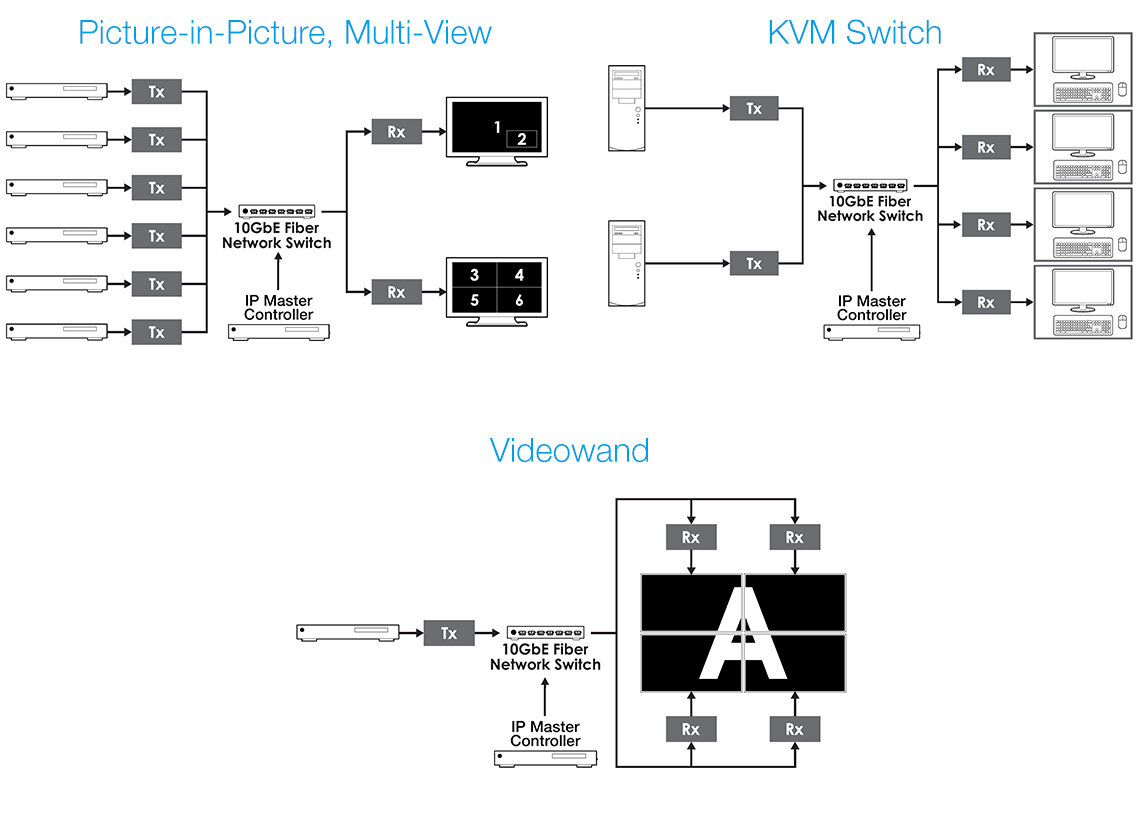
Your wishlist is empty
